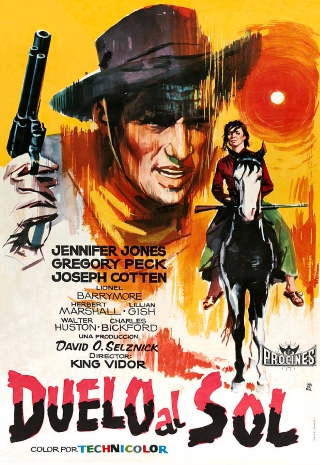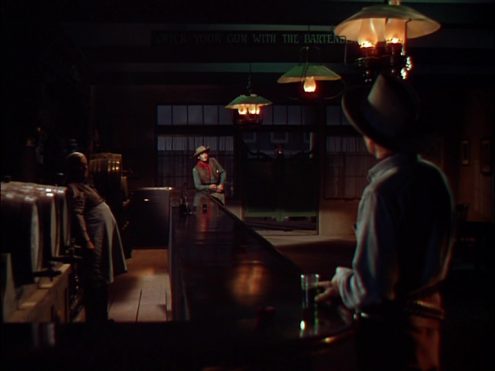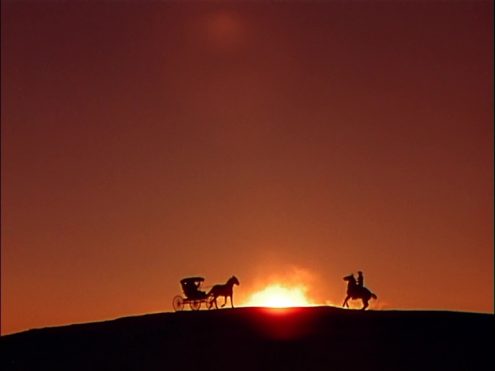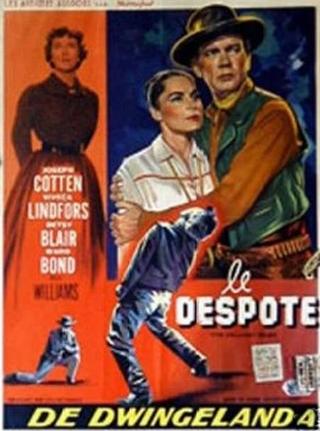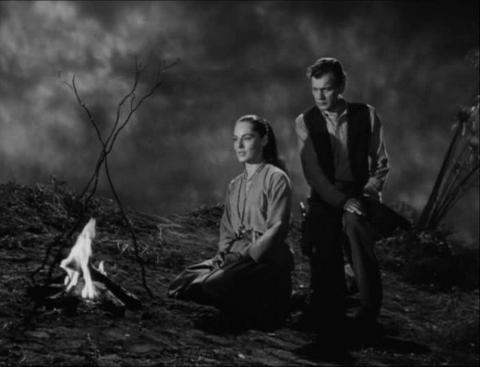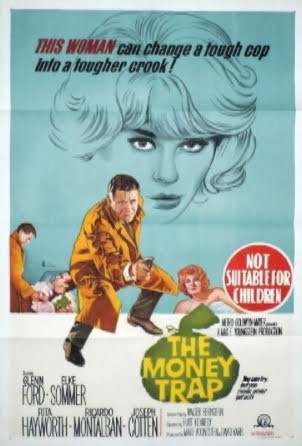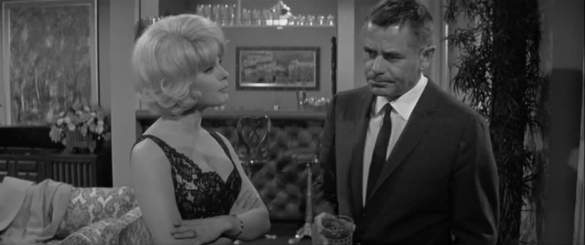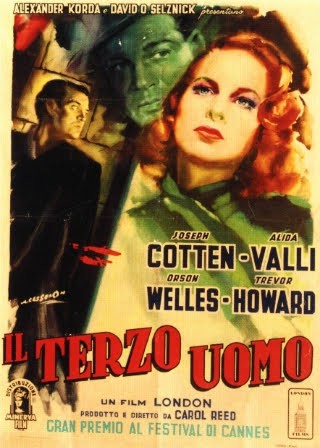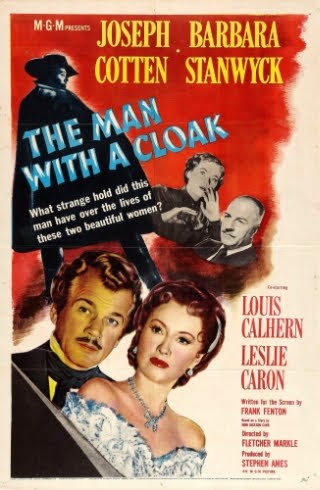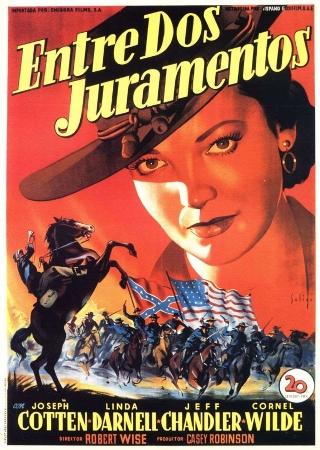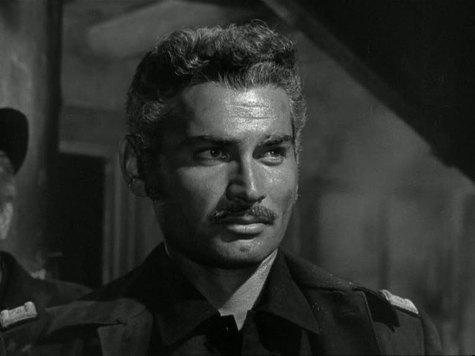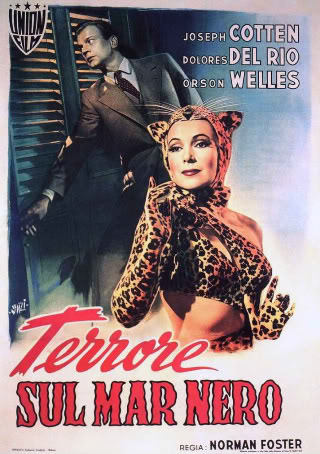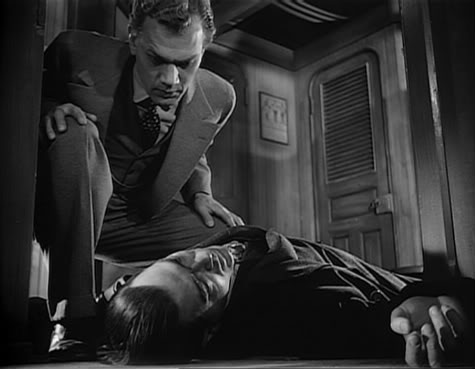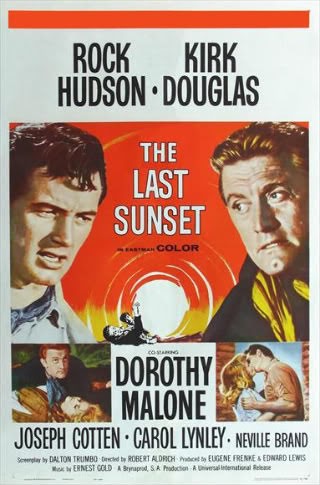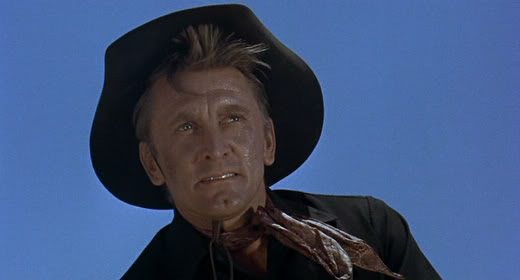Deep among the lonely sun-baked hills of Texas the great and weatherbeaten stone still stands; the Comanches called it Squaw’s Head Rock. Time cannot change its impassive face nor dim the legend of the wild young lovers who found heaven and hell in the shadows of the rock. For when the sun is low and the cold wind blows across the desert there are those of Indian blood who still speak of Pearl Chavez, the half-breed girl from down along the border, and of the laughing outlaw with whom she here kept a final rendevous, never to be seen again. And this is what the legend says: a flower, known nowhere else, grows from out of the desperate crags where Pearl vanished. Pearl who was herself a wild flower sprung from the hard clay, quick to blossom and early to die…
It’s not uncommon to come across critics and writers referring to the operatic qualities of Sergio Leone’s westerns. I’m not sure I’ve ever seen it applied to other spaghetti westerns, but of course Leone’s films were not really like other spaghettis anyway. Nevertheless, I don’t believe his films were the first westerns this label could legitimately be applied to. To my mind, opera is essentially melodrama set to music; roaring, all-consuming passions explored and exploited with grandeur. Yet excepting a handful of cases, cinematic melodrama tends to get brushed aside somewhat disdainfuly, as though the cranked up passions on display are paradoxically of diminished value. Duel in the Sun (1946) is full-throttle, unapologetic western melodrama, a heady Technicolor cocktail of love and hate, of guilt and desire. It is operatic in scale, mood and ambition, and I feel it must have been an influence on Leone.
The credits roll and segue into an impression of the desert bathed in a twilight glow, Dimitri Tiomkin’s otherworldly score whispers across the sand and rocks, and Orson Welles softly intones those words at the top of this piece. The allusion is towards the epic and the movie, bursting in upon a nighttime street scene, is forever striving to become an epic. There is sweep and scale and spectacle, the frequently breathtaking visuals manfully going toe to toe with a tale which crackles with the power of the emotional currents contained within. This is the story of Pearl Chavez, daughter of a dissipated Creole (Herbert Marshall) and an Indian mother (Tilly Losch). She witnesses her father’s shooting of her faithless mother, and then his subsequent execution for the crime. Before his death though, he sends her on her way to seek out the protection of Laura Belle McCanles (Lillian Gish), his first and perhaps only real love. Laura Belle is married to the wealthy and influential Senator Mc Canles (Lionel Barrymore), a wheelchair-bound bigot whose own family is hardly less dysfunctional than the setup Pearl has just left behind. The idea is to turn Pearl into a lady, a task destined to be thwarted by the girl’s own wilful and untamed nature, the Senator’s undisguised prejudice, and the competing attentions of his two sons.
Jesse (Joseph Cotten) is the elder brother, educated and with a broader and more progressive outlook, the latter aspect highlighted especially by his willingness to embrace the arrival of the railroad and the consequent restrictions which will inevitably be placed on the concept of the open range. It’s a common feature in westerns to see the railroad driving back the frontier and pressing ahead with the process of civilization with every sleeper and rail laid. If Jesse can be said to be progressive in this wider, visionary sense, there’s no denying that he also suffers from what might be termed a form of moral idealism, an unfortunate tendency which, at a crucial moment, allows his judgement to be fogged by some latent prudery or sanctimony. Lewt (Gregory Peck), on the other hand, is something of a primal throwback, a reckless man of the moment, impetuous and ruled largely by his instincts and desires. He is his father’s favorite for his full-on machismo and that earthy nature which suggests a greater affinity for the vast and sprawling Spanish Bit ranch. Yet Lewt is as faithless as he is feckless, a self-obsessed man who takes his pleasures where he finds them, spoiled, entitled and lacking any kind of moral compass. He treats his brother with disdain, the world as his private playground, and Pearl as just another glittering toy within it. Pearl herself is every bit as complicated as the men who covet her; she yearns for that illusory respectability her father failed to provide but is too impassioned to ever make the necessary compromises that might attain it. Transplanted into an alien environment, she finds herself assailed on all sides – weighed down by the proprietorial expectations of Laura Belle, shamed and demeaned by the contempt of the Senator, wooed by the decency of Jesse but simultaneously overpowered by her hunger for the no-good Lewt.
Those three points of the dramatic and romantic triangle are brought to life by three well chosen performers. Cotten’s reserve and diffidence is used effectively to show a man capable of professional determination but a more faltering approach to matters of the heart. Peck’s natural confidence is concentrated and twisted into a cocksure egotism. And Jennifer Jones was afforded the opportunity to explore an extraordinarily broad range from barefoot ingenue to abused victim and finally avenging femme fatale. Generally, it is hard to find fault with the casting of Duel in the Sun. From the decaying patrician weariness of Herbert Marshall to the unvarnished meanness of Lionel Barrymore, the characters who populate the tale neatly capture the flavor of their roles. Lillian Gish had the ability to tap into that fading delicacy that was entirely apposite for a woman whose essential gentility has been broiled by relentless exposure to a husband whose temperament is as caustic and pitiless as the Texas sun. Smaller but by no means insignificant roles are filled by Charles Bickford as the aging and tragic suitor smitten by Pearl, Walter Huston as the larger than life Sinkiller, and Harry Carey as the Senator’s old associate.
Films produced by David O Selznick tend to have a lot of the producer himself in them, his hands on approach practically guaranteeing that. Duel in the Sun saw him producing this adaptation of Niven Busch’s novel and also taking a hand in the writing alongside Oliver H P Garrett and an uncredited Ben Hecht. Somehow the man seemed to be imprisoned by his own success after Gone with the Wind and his struggles to escape and surpass the long shadows cast by that epic production dominate much of his subsequent career. Duel in the Sun has ambition stamped all over it, although it doesn’t always hit the mark. That blend of writers has Lewt appearing too one-dimensional for starters: he’s an out and out villain, self-serving, cold, abusive and murderous. Yet we have to buy into Pearl’s inability to resist him. Sure he ultimately goes too far and pays the price as a consequence, but the fact it takes so long for this to occur is something I find problematic. That said, I guess the overriding theme of the entire piece is that of being trapped by one’s nature. Pearl is in the spotlight more than anyone else, but none of the leading characters seem able to break the bonds built by their own natures either. This is perhaps the real tragedy of it all, a collection of people all fated to live out their lives damaging themselves or those around them.
The director’s reins were taken up by King Vidor, who would work with Jennifer Jones again a few years later on Ruby Gentry, and the frustration of working under Selznick apparently drove him off the set. This is one of those movies where a whole raft of people seem to have had a hand, albeit uncredited, in getting it to the screen. Aside from Vidor, Josef von Sternberg, William Dieterle, and Selznick himself, to name just a few, worked on the film. Even the cinematography was shared out by Hal Rosson, Lee Garmes and Ray Rennahan. One might be forgiven for expecting a bit of a disjointed affair as a result of all this but the finished film remains remarkably cohesive. The scenes of the advancing railroad had me thinking of Leone and his similar setups as Sweetwater gradually takes shape in Once Upon a Time in the West. The panache of the various duels that develop as the story progresses leads me to wonder about their influence too – from the barroom confrontation between Bickford and Peck, and that poignant shot of the engagement ring, to the stylized face off between Cotten and a mounted Peck, and of course the final showdown which builds to a truly operatic finale. In among this there are numerous memorable visual flourishes too, the marshaling of the Spanish Bit riders being a good example. However, one of the standout scenes for me is the dawn meeting between Lewt and the Senator as the younger man heads off into hiding. It is shot in silhouette atop a hill with the rising sun in the centre, an almost demonic image as though the flames of the abyss itself were reaching out to reclaim these two scoundrels.
Duel in the Sun has had a number of releases in various territories over the years, with Kino in the US putting it out on Blu-ray. For the present, I’m still relying on my old UK DVD, which generally looks fine and shows off the stunning cinematography well, although there are instances of softness and a few registration problems at times. I am aware this may not be a movie that is to everybody’s taste – it is necessary to tune into those heightened and heated emotions that underpin this type of melodrama in order to appreciate it all – but it strikes me as a title that would be an excellent Blu-ray candidate for one of the boutique labels in the UK. Here’s hoping…
